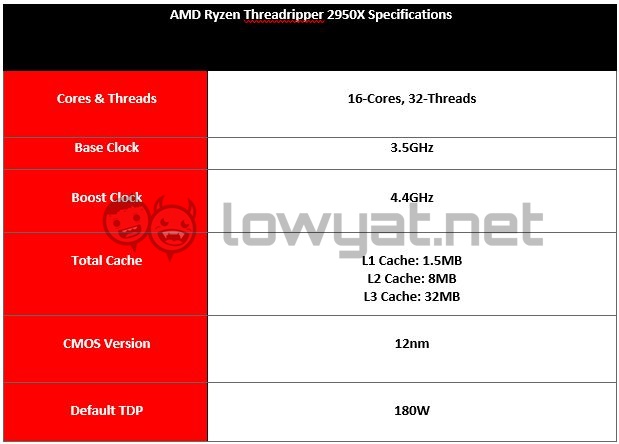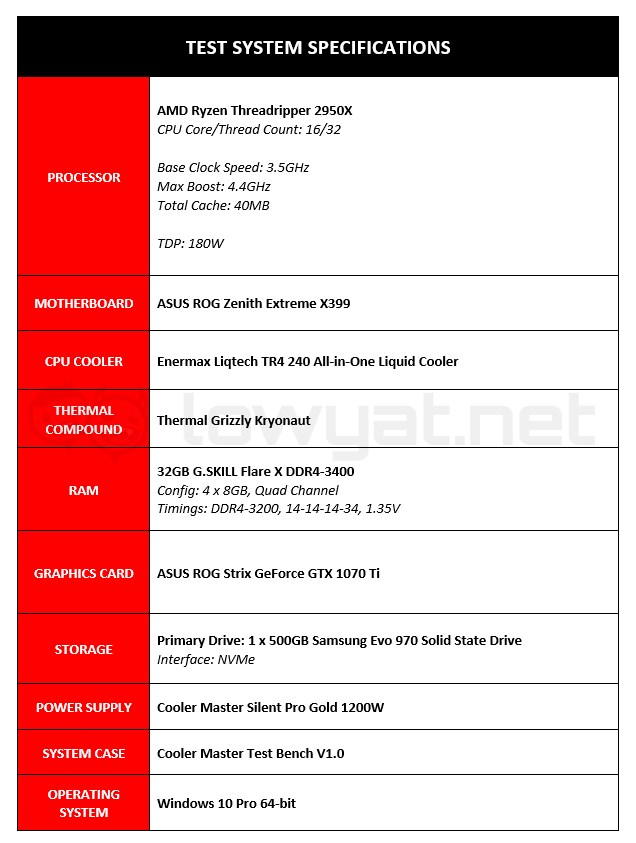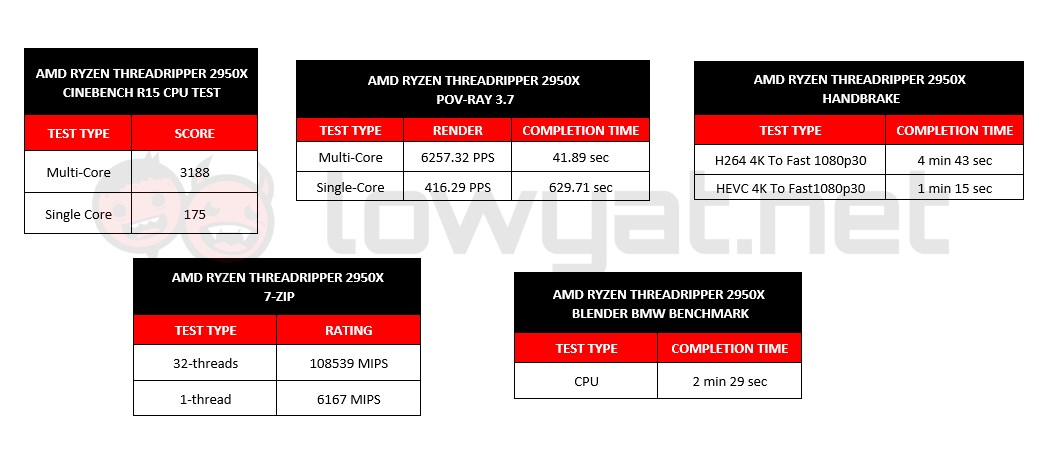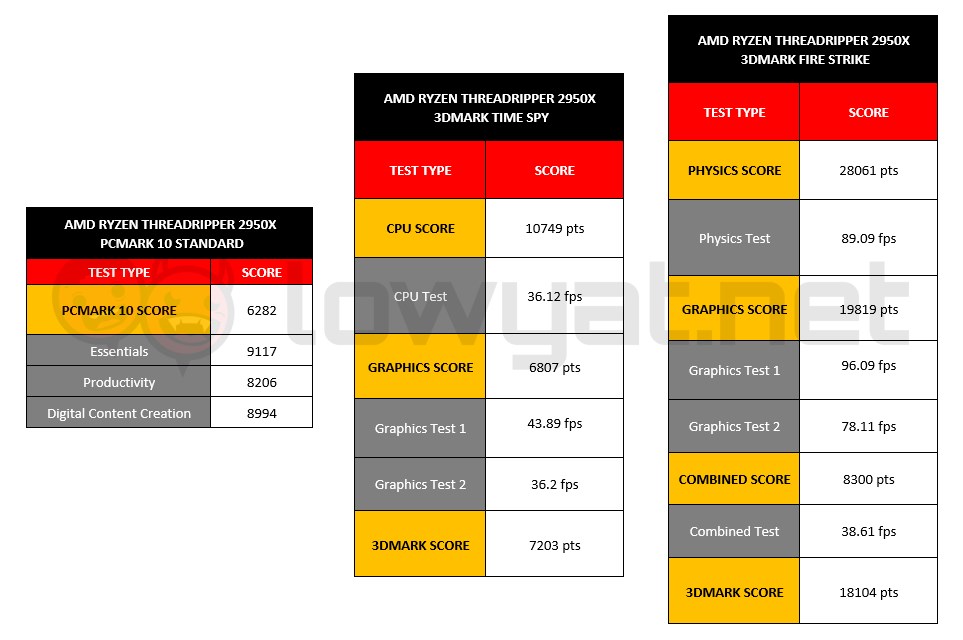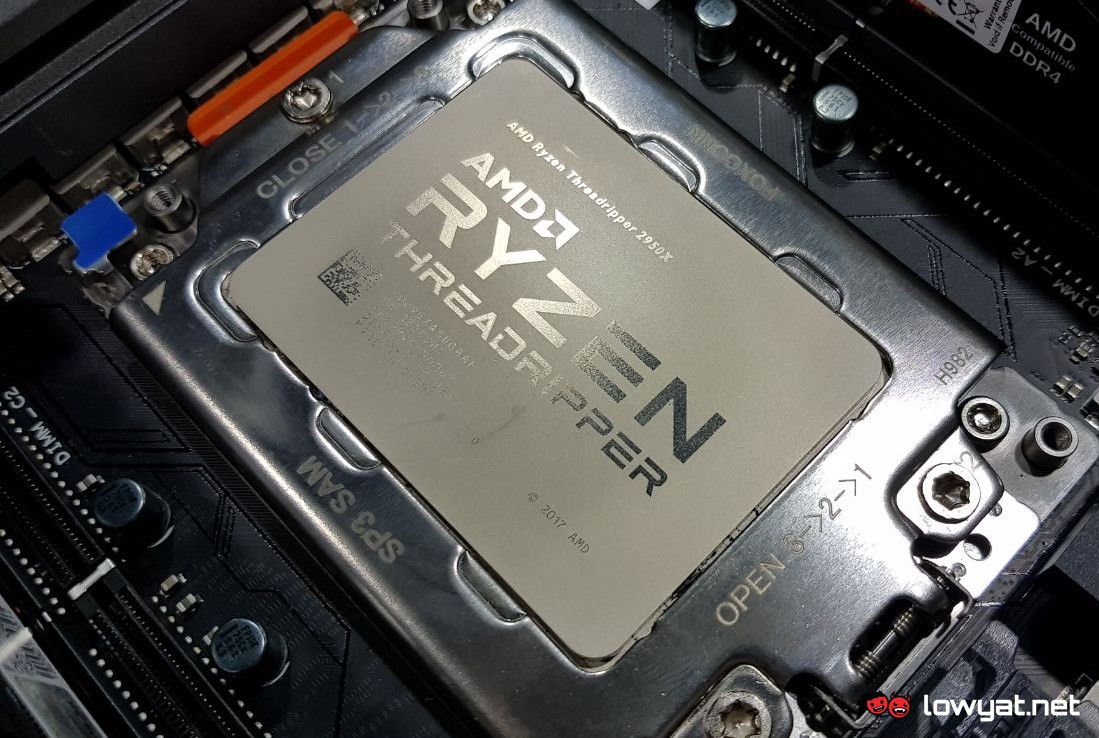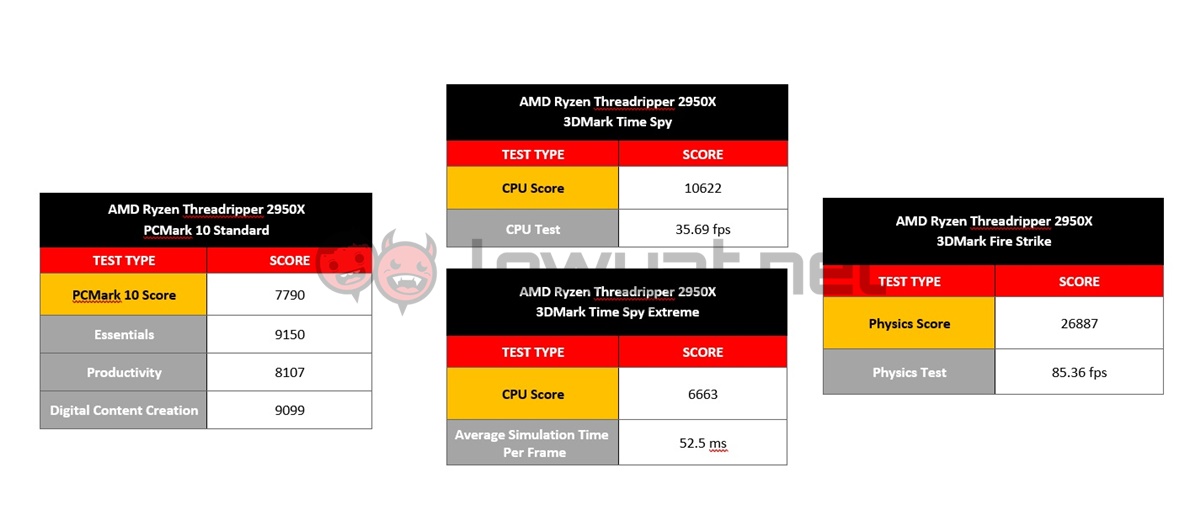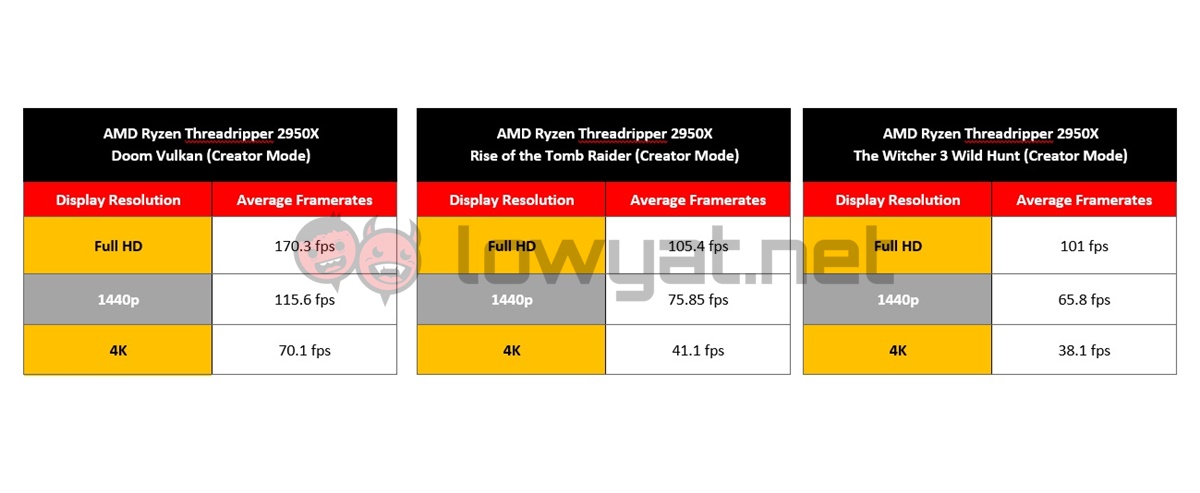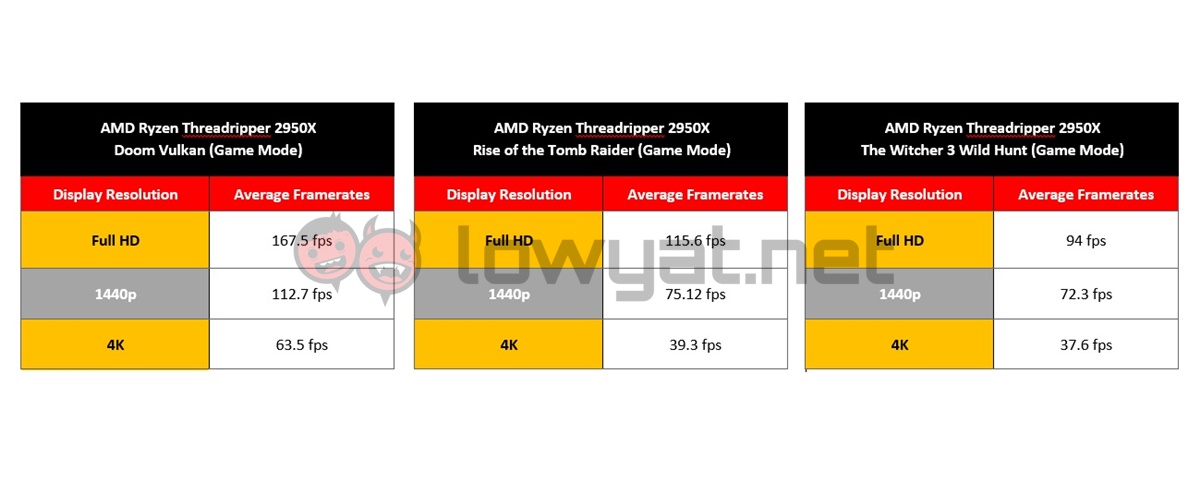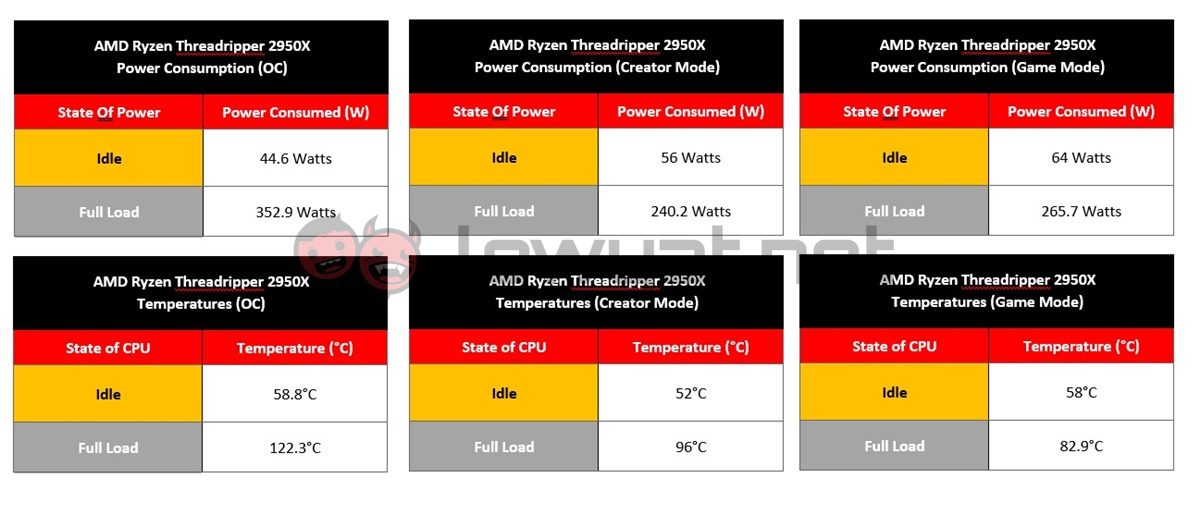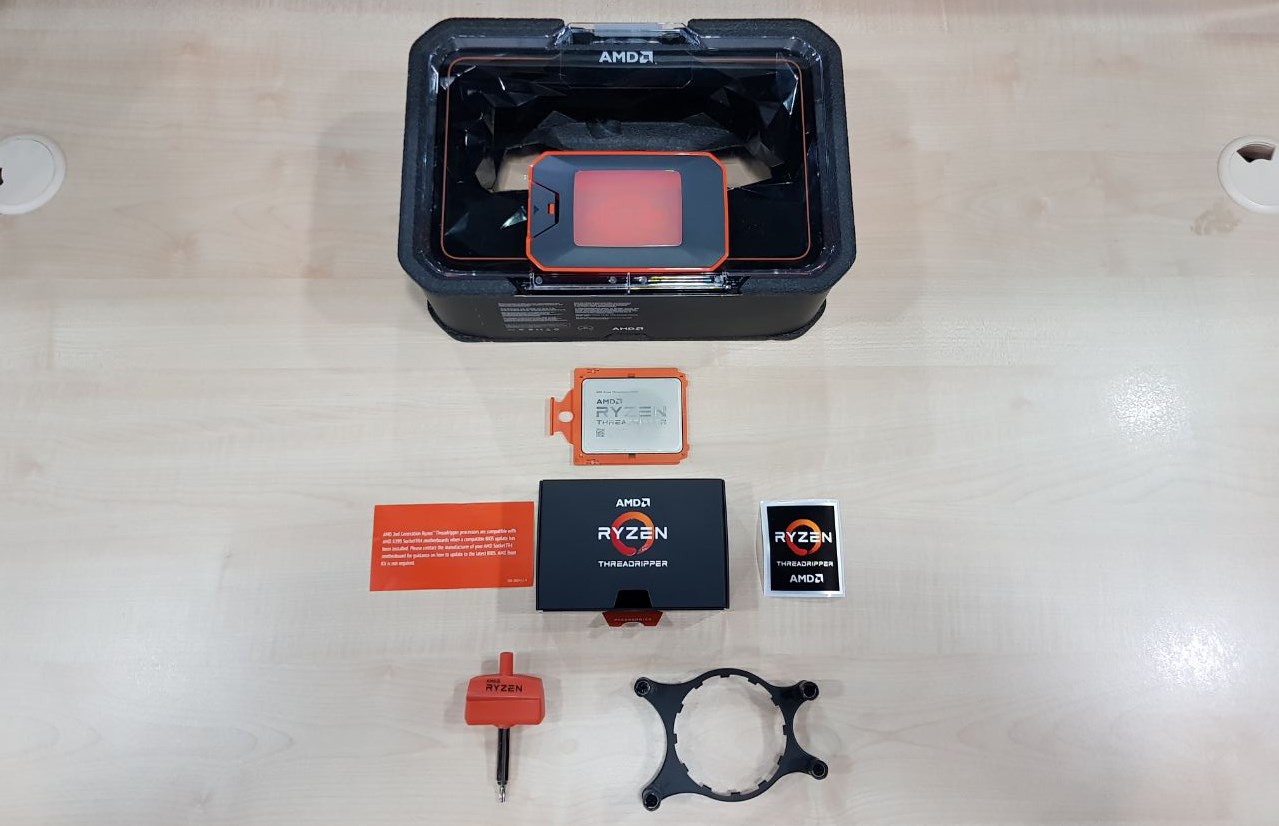Now that we’ve had some extra time to play around it with a little more, here’s a slightly more in-depth look at AMD’s third-most powerful HEDT CPU.
Specifications
As a recap, the 2950X is essentially a refreshed variant of AMD’s original Ryzen Threadripper 1950X that launched back a year ago. Specs-wise, the processor features a 16-cores, 32-threads setup based on 12nm die lithography. Versus the 1950X’s 14nm fabrication. It has a base clock of 3.5GHz, but unlike its predecessor, the 2950X’s default boost clock speed is rated slightly higher at 4.4GHz. Like all HEDT CPUs, the 2950X comes with a hefty L3 Cache at 32MB. And yes, it obviously can be overclocked.
Test Rig
The test rig which we’re using is the same as when we conducted our first look with the CPU. Nothing was changed during the rest of our testing period.
Benchmarks
Because we’ve already done the initial benchmark testing prior to this, we won’t spend too long in this section. As mentioned in the section prior, the initial results remain just as they are, the only differences being noted in the following Overclock section. On that note, you can read our first look of the 2950X to get up to speed, but the benchmarks we ran were Cinebench R15, Handbrake, POV-Ray for ray-tracing, 7-Zip for file compression and Blender for 3D Rendering. We also ran UL’s PCMark 10, as well as the physics and CPU intensive portions of 3DMark’s Fire Strike and Time Spy tests. Below are the test results:
Overclock
Naturally, with a HEDT CPU in our temporary possession, overclocking the Threadripper 2950X was a definite must. It should be noted that, while the 2950X is stated as having a maximum boost clockspeed of 4.4GHz on paper, the most I could get out of it was the 4.2GHz with the CPU Core Voltage set at 1.4V. I had managed to push the clockspeed to 4.23 (4.225GHz, specifically) with the CPU Core Voltage set to 1.45V, but even that was unstable, and some benchmarks started showing diminishing returns in performance. As such, I’ve left the OC settings at more sustainable levels. In retrospect, I also suspect that I may have been a little bit too conservative with the CPU Core Voltage. I say this because I noticed the CPU’s Core Voltage limit actually spiking beyond the 1.5V threshold, leading me to believe that the Threadripper 2950X could’ve reached its advertised boost clock of 4.4GHz. Had I actually taken a chance on the CPU’s power.
The overall scores from all the synthetic benchmarks were actually not that much different from the benchmark score I had gotten when I first tested the 2950X prior to overclocking it. The only time the CPU showed a marked difference in its performance was in the PCMark 10 and 3DMark CPU and Physics tests. To be precise, the 2950X showed improved performance on the PCMark 10 test, but fared a little less so with the 3DMark tests.
Gaming in Creator and Game Mode
While the 2950X (or any of AMD’s Threadripper CPUs, for that matter) is not specifically or primarily designed for gaming, I decided to take some time and run some game titles. Both on the CPU’s Creator and Game Mode via the Ryzen Master CPU program. To that end, the game titles that I ran at the time of testing was Doom, Rise of the Tomb Raider, and The Witcher III Wild Hunt.
For the record, running the 2950X on Game Mode automatically disables half of its total cores, but overall performance between the two modes were not overly drastic. In fact, the one title that seemed to have benefited from Game Mode was Doom, where the game actually saw a surge in framerates while gaming in Full HD. Beyond that, the difference in framerates between the modes were negligible.
Power Consumption And Thermals
Power consumption and heat are obviously two subjects that you can’t run away from when concerns a HEDT CPU. In the case of the 2950X, the CPU was by far the most power hungry processor that I’ve come across, to date. Overclocked to the earlier mentioned 4.2GHz, the CPU pulled more than 400 watts of power from the initial surge that comes from firing up a synthetic benchmark. Before eventually averaging 350 watts ultimately. Naturally, testing the CPU in its default Creator and Game mode presets showed significantly less power draw than when it was overclocked, but still considerably more power than even a high-end consumer CPU.
There is, however, the issue with thermals. Even with the AiO water cooler provided by AMD, the CPU was hitting temperature upwards of 120°C in an overclocked state. The CPU was literally past boiling point, and to our surprise, it was still running. In both Creator and Game mode, the 2950X’s average temperature on a full load was significantly lower at 96°C and 82.9°C, respectively.
Conclusion
As a second generation CPU, the AMD Ryzen Threadripper 2950X is most certainly a processor to behold. At 16-cores and 32-threads, there’s no denying that this HEDT CPU can definitely pull its weight, and that is before you even bring overclocking into the equation. On that note, my main problem with the 2950X simply boils down (no pun intended) to the insane amount of power that it requires. Along with the equally insane heat that it outputs, and that’s with an AiO cooler keeping it in check. The only silver lining that offsets this caveat would be the CPU’s consistency. Regardless of how how the CPU got, I never once saw it throttle in its performance. At an asking price of RM3899, the 2950X is most certainly not the most expensive HEDT CPU on the market, making it a good starting point for content creators and professionals who need those extra cores to help with CPU intensive tasks.
